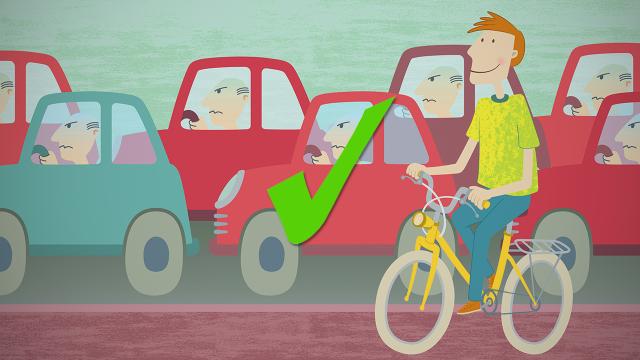No one wants to be in the way of others. Sometimes you might not even realise that you’re causing a problem when you’re busy at work, focused on your own project. But if you take special care to communicate clearly, you won’t become a human bottleneck.
This post originally appeared on the Sandglaz blog
So just what is a human bottleneck? It’s the person who prevents work from moving forward, who stops the advancement of a project and momentarily pauses the work of others.
While process bottlenecks are definitely widespread throughout many organisations, human bottlenecks are pretty common too. It’s easier to change human bottlenecks than organszational ones, especially if the organisation’s processes are clunky. People are in control of their own actions. With a little self-awareness, we can improve how we work and collaborate.
When Do We Become Bottlenecks?
You might become a problem in your team’s workflow when you’re having a hard time finishing your part of a project, or are swamped with other requests that are clouding your ability to prioritise. It happens to everyone sometimes. In this case, we’re becoming bottlenecks because of internal inefficiencies. It may also be the case that because of organisational procedures, we are unable to access the information that we need to move forward — these are external inefficiencies, like dealing with a slow bureaucracy.
Should the requests of others take precedence over our own work? To some extent. While you don’t want to drop your work any time someone needs something from you, you also don’t want to impede others’ ability to do their work. You should try to find a balance that works for both you and your team members.
Whatever the case may be, there are certain things that are in our control and that can prevent us from becoming human bottlenecks.
Clarify Expectations
Clarify both what’s expected of you and what you expect from others. Clear communication of expectations can help you and your team members to prioritise work in such a way that no one impedes the progress of others.
This way, if you know that one team member has a certain deadline, and they need certain information from you two days before their deadline, you will be able to arrange your work so that they will receive the information on time.
Likewise, if a team member is expecting something from you by a certain time, but you have a deadline that you need to prioritise, that team member will be informed when to expect your part of the work.
Communicate Early and Often
Don’t wait until the last minute to communicate what your schedule looks like and when team members can expect.
If something comes up and you’re not able to fulfil a request, let it be known as soon as the situation arises. It will save your team members from a lot of frustration and it will help you maintain your reputation.
Share Information
It’s easier than ever to share information with team members. With the help of office apps and communication tools, you can make sharing of information a breeze. Chances are that if information is easily accessible, team members won’t need to constantly ask each other questions and cause a constant ping-pong of let-me-get-back-to-you.
Review Workflow Processes
Processes usually play a huge part in causing bottlenecks, so they’re worth reviewing. Procedural bottlenecks are external factors that are slowing your workflow, and they should be removed when possible. Imagine three freeway lanes suddenly funelling into one — no matter how effective and efficient each driver is, slowing is inevitable.
See how you can work on transforming that one lane into two or even three lanes to break the bottleneck.
Accept Suggestions For Improvement
Sometimes, our team members can see things that we can’t because we’re immersed in the work. Don’t be afraid to accept, and even ask for, suggestions from team members on how you can remove bottlenecks. When you acknowledge that there is a problem and ask your team members to help you solve it, it can strengthen the team.
Lastly, if you’re the last person to receive the work in the project, or the last person to see the project before it’s finished, it’s just as bad to leave it on the back burner for a long time.
Although you are not technically a bottleneck since others aren’t depending on you, you have to understand that other team members have worked hard to deliver what you need for the project in a timely manner. Try to see the project through in a timely manner, and if you can’t, communicate that as soon as you can.
How not to be a human bottleneck [SandGlaz]
Image by javi.ruiz (Shutterstock)

Comments